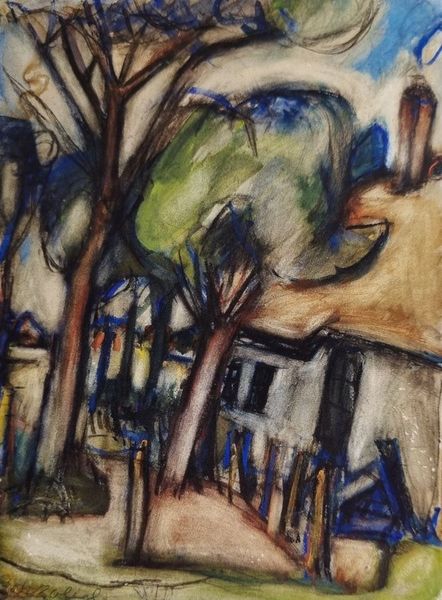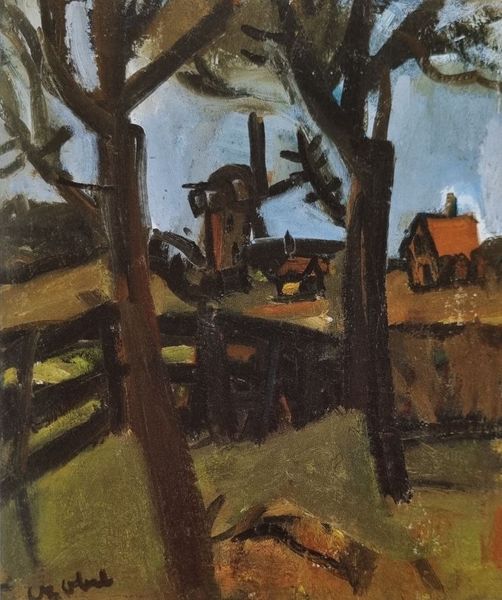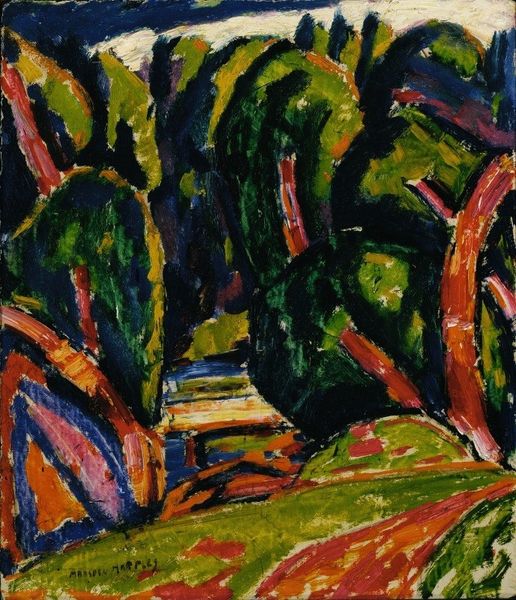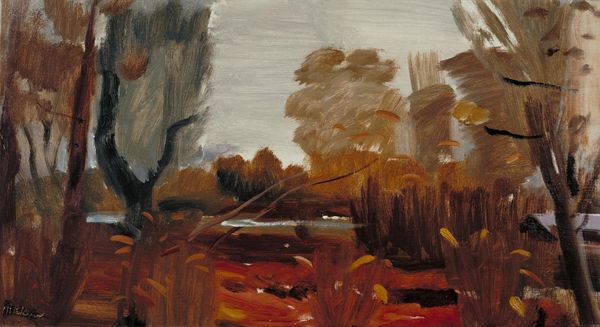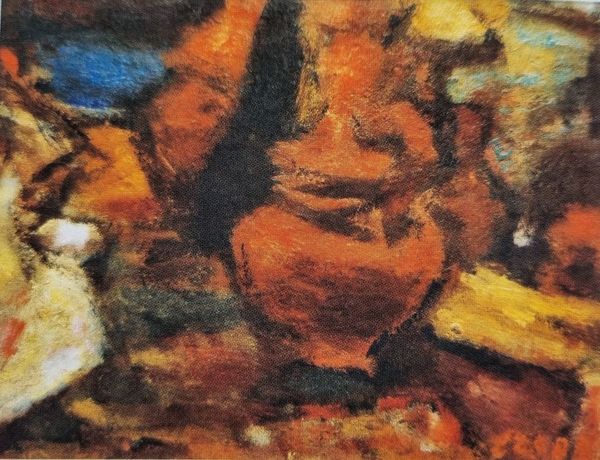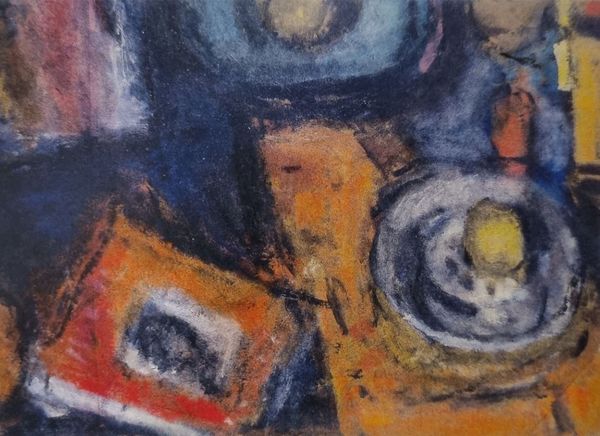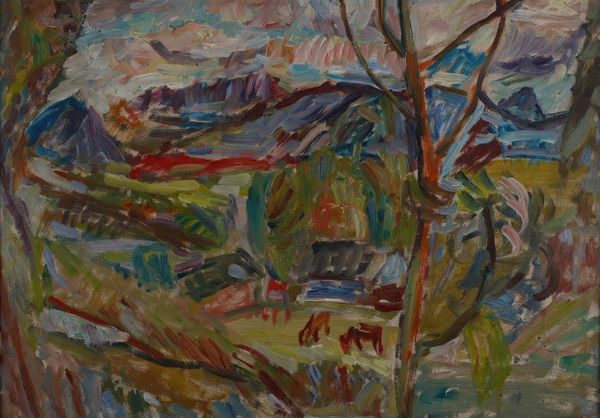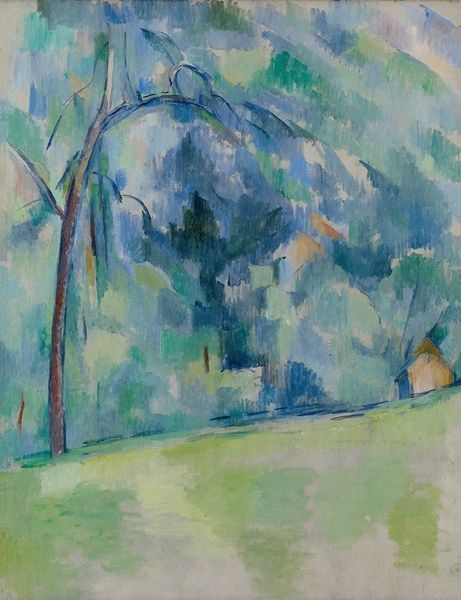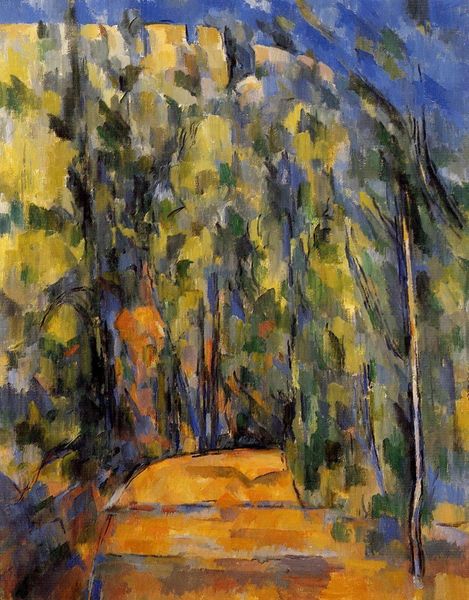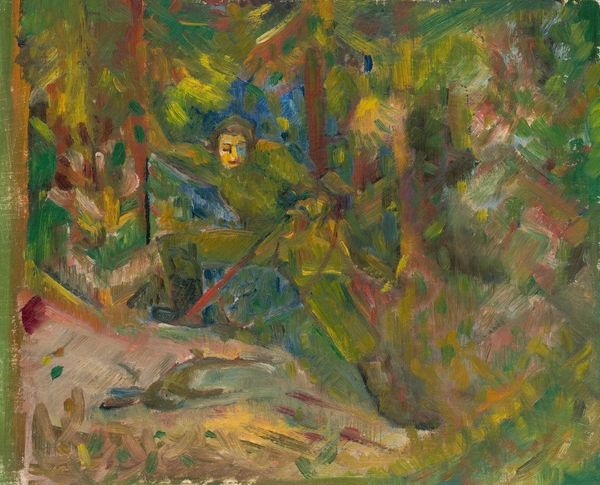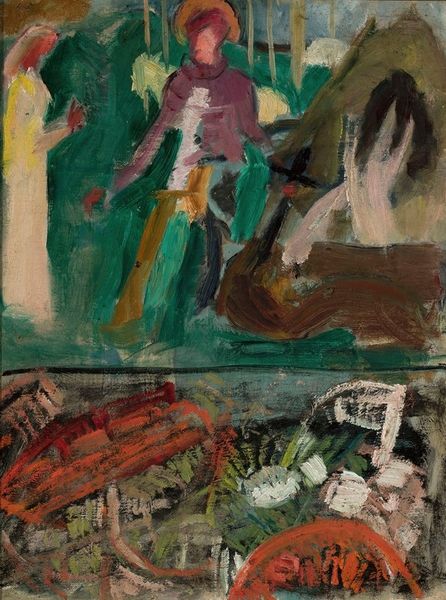
Copyright: Public domain US
Béla Czóbel made "Hármas Út" in 1920 with oil on canvas, and it's like looking into a wild garden through a kaleidoscope. The brushstrokes are these juicy dabs of color, greens and browns mostly, that build up the scene like a puzzle. You can practically feel the texture of the paint, thick and almost sculptural in places, like he's carving out the light and shadow with his brush. Notice that small white stroke near the center? It’s a tiny explosion of light. It’s as though the whole painting pivots around this one little mark, which gives the whole piece a zing. I think about Bonnard and Vuillard, how they used color to create atmosphere. Czóbel is definitely in conversation with them here, pushing the boundaries of perception. It's a reminder that art is not about perfect representation. It's more about the messy, imperfect, and beautiful process of trying to make sense of the world.
Comments
No comments
Be the first to comment and join the conversation on the ultimate creative platform.
